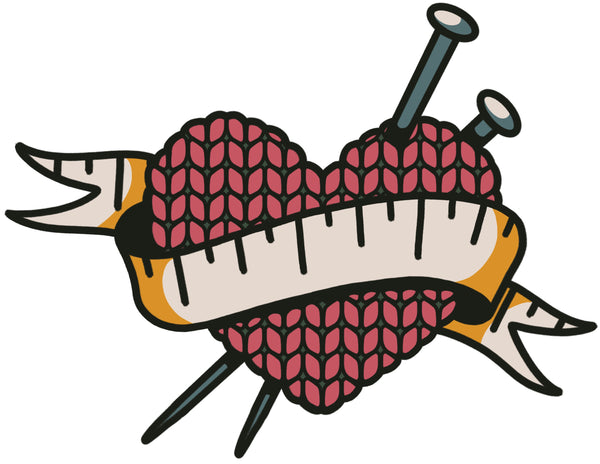It's time to talk about ...dun dun dun... GAUGE.
One question comes up again and again on the podcast, in knitting groups, and in pattern support questions - "I can't get gauge, should I give up on this yarn / pattern / hobby / mortal coil?"
The answer is, of course, it depends
Making decisions about gauge depends on having excellent information about what you’ll create. That means a high-quality gauge swatch that accurately reflects what you’ll get when your sweater is done.

I just knit 11 swatches for a spring tank top. This isn't them. Because it's dark 20 out of 24 hours and rainy the other four, so I haven't taken pictures in a billion years. You'll just have to trust me when I say I knit 11 swatches.
Make and measure a gauge swatch that won’t lie
- Make a bigger swatch - aim for at least 6” square in the stitch pattern you need to measure.
- Wet block your swatch and allow it to dry completely - then wait a few more hours. I dry mine on a hard, smooth surface so it can shrink and assume its natural dimensions.
- Unless it’s lace, don’t use pins when your swatch is drying.
Measure better
Use thread or slender pins to count out whole stitches, then use a rigid ruler to measure to the nearest 1/16” or single mm. Convert that to 4” or 10 cm.
Whole stitches / precise length in inches * 4 = stitches in 4”
Whole stitches / precise length in cm * 10 = stitches in 10 cm
So you REALLY don’t have gauge
You’ve made an excellent swatch and measured it accurately, and you still aren’t quite there. What next?
Change your needles
Change needle sizes
If your stitches are too small or large, try a different sized needle. New knitters often think they HAVE to use the recommended needle size - please know that’s just a starting point.
Not obvious to even experienced knitters? Stitch gauge doesn’t always change when you use a different sized needle. I often find that changing needle sizes does not change my stitch count, but DOES change my row count. So if you’re getting stitch count but not row count, it’s worth trying a different sized needle.
Change needle material
Because yarn moves differently across different surfaces, swapping from wood to metal or plastic can make a difference in gauge. If you’re close but want to see if you can get closer, try switching to a different needle type.
Do you like the fabric?
If your stitches were tighter/looser to get gauge, would you still like the result or would it be too dense or too unstructured? If you like the fabric you’re getting, you’ll need to adjust the pattern to work or save this yarn for another project. If you don’t like this fabric, keep trying different needle sizes.
What’s the difference?
Calculate the impact of the gauge you’re getting. How do the width and length of the garment change if you use this yarn and needle combo?
If your stitches are 15% wider and 10% longer than the pattern calls for, what does that do to the finished measurements for your size? How about adjacent sizes?
If you’d be happy with the result or the result is easy to adjust, you’re ready to cast on.
Important - don’t forget lengths. We think of stitches first, but it’s rare for knitters to get stitch and row gauge both *exactly*.
Be aware of which is more important to the pattern. How will the yoke or armhole depth change? It’s easy to adjust the hem to the underarm, but it’s important to know whether your arm will fit in the garment - or if the underarm will be way down by your lower rib!
How comfortable are you with the construction?
If you’re a raglan girlie, adding or eliminating a few rows in your yoke is no big deal for you. And if set-in sleeves are your comfort zone, you already know to adjust your cap by the same number of rows you added to your armhole. Is this a garment you just *get*? Or is it one where the work of modifying it would kill the fun?

What do you *WANT* to do?
If you want the garment in the fabric you’ve created and the mods are in your skill set, make the mods! You’ll be even prouder of the finished garment than if you knit it vanilla.
If it sounds like a chore, or you’re worried it’ll be too stiff or floppy? Skip it.
Final tips
- Don’t plan to ‘knit loose’ or ‘knit tight.’ We really can’t control our gauge that well throughout a project. Let the needles determine your tension and change the needles until you get the best fabric possible for your yarn.
- Sometimes our row gauge is too short and our stitch count is too wide. For whatever reason, different yarns sometimes assume different shapes. If this happens, you’re probably on target - when you wear the garment it is likely to stretch down some, or at least be amenable to some coaxing in the blocking process. Try knitting a sleeve and see how it blocks out.
To dig into this topic more, watch Episode 12 and Episode 26 of the One Wild Podcast.


